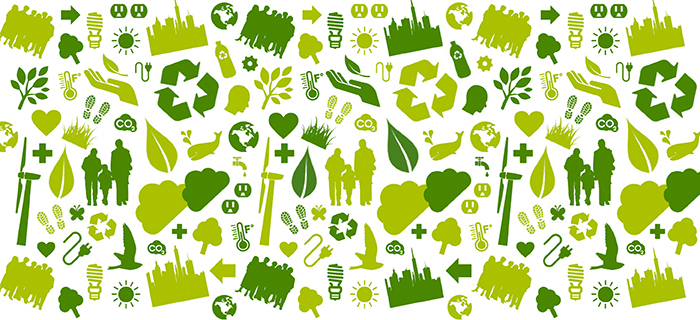Stories

California ended 2015 in a historic drought, despite the arrival of El Nino. The December Convention on Climate Change in Paris highlighted rising greenhouse gas emissions. And it seems commonplace when we hear about another environmental affront in some part of the world, from air pollution in China to deforestation in Nigeria.
In the face of seemingly endless reports of dramatic negative climate and environmental impacts to our planet, it’s tempting to resign oneself to ask, “Well, what can I do about it?” Conservation at the individual level seems like a drop in the bucket, but we also know — drops make oceans.
This is the concept behind the development and rise of sustainability districts, a movement to dramatically reduce the environmental impacts of building development, construction and operations. Rather than being a top-down, government mandated movement, sustainability districts are private-public partnerships led by individuals — people who, one by one, stand up to be accountable.
The district concept encourages multi-level, multi-stakeholder collaboration toward a common goal that benefits the environment at large. A district is a practical unit, large enough to create leveraged impacts, but small enough to allow for nimble decision making.
Rather than being a top-down, government mandated movement, sustainability districts are private-public partnerships led by individuals — people who, one by one, stand up to be accountable.
That’s why RMW is enthusiastic about the San Francisco 2030 District, which has been established to cover an area that includes the city’s Financial District, Civic Center, SOMA and China Basin neighborhoods. Thirty-seven building owners, managers, and tenants representing more than 10 million square feet of commercial office, multi-family residential, hospitality, and civic uses have signed on to meet the Architecture 2030 Challenge for Planning goals: to reduce water use, energy use, and transportation CO2 emissions to 50% below established baselines by the year 2030.
2030 Districts have been successful in cities such as Seattle, Cleveland, and Toronto because they provide specific performance targets based on the Architecture 2030 Challenge for Planning framework. Currently, San Francisco’s 2030 District is in the process of setting performance metric baselines and developing incentives for building owners such as a special purchasing alliance. Similar to PG&E’s Home Energy Reports, which track your home’s energy use and benchmarks it anonymously to similarly sized homes, San Francisco 2030 District members agree to have their water, energy, and CO2 emissions monitored for anonymized comparison, and share information and best practices to reduce use.
San Francisco’s 2030 District benefits from voluntary participation by commercial and institutional building owners at all scales. A preponderance of current members is large portfolio real estate corporations, but to be truly successful it will need to engage small property owners in much greater numbers. According to SF Environment’s citywide greenhouse gas emissions inventory, 30% of San Francisco’s annual carbon dioxide emissions are associated with electricity and natural gas use in small commercial buildings. These emissions represent approximately 1.5 million metric tons a year.
There is a saying: ‘We know only too well that what we are doing is nothing more than a drop in the ocean. But if the drop were not there, the ocean would be missing something.’
Only a cooperative effort will bring overall numbers down. How much difference can one person make? Tons of difference, when there are many “one persons.” If you, your business, or your building are interested in learning more about San Francisco’s 2030 District, contact Stan Lew, AIA, LEED AP, Executive Director, San Francisco 2030 District, (415) 971-9958, stanlew@2030districts.org.
global challenges / sustainability